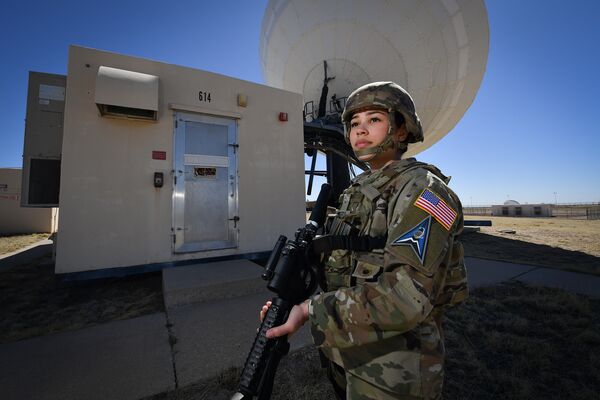
A member of the 4th Space Operations Squadron secures a wideband Military Satellite Communications System site at Schriever Space Force Base in Colorado. (US Space Force)
The United States Space Force (USSF) is preparing to evaluate industry proposals and prototypes for its new Protected Tactical Satellite Communications (satcom) – Global programme, while USSF officials have already downselected which industry teams will compete for the counterpart effort, dubbed Protected Tactical Satellite Communications – Resilient (PTS-R) programme.
The PTS-R and PTS-G are part of USSF's proposed Protected Anti-jam Tactical Satcom (PATS) family-of-systems. “The PATS integrated approach includes the Protected Tactical Satellite Communications (PTS) and Protected Tactical Enterprise Service (PTES) programs” as a means to provide advanced anti-jamming capabilities to the US armed forces, according to USSF's fiscal year (FY) 2025 budget proposal.
As designed, the PTS systems will be “the disaggregated tactical communications follow-on” to the Advanced Extremely High Frequency (AEHF) satcom platform, USSF budget documents stated. Once mature, the PTS system will “provide tactical users increased protection with worldwide and polar, beyond-line-of-sight, anti-jam (AJ), low-probability-of-intercept communication in benign and highly contested anti-access/area denial environments”, the documents added. USSF officials requested USD348.9 million in FY 2025 to finance PTS-G and PTS-R development.
Operating across in X-band and military Ka-band, the PTS-G programme will consist of two microsatellites – dubbed PTS-G-Ka and PTS-G-X – operating at geosynchronous orbit (GEO), according to USSF officials. PTS-R will operate in the miliary Ka-band exclusively, budget documents stated. To that end, officials from USSF Space Systems Command's Military Communications and Positioning, Navigation, and Timing (MCPNT) Program Executive Office, in conjunction with the command's Commercial Satellite Communications (COMSATCOM) office, are holding an industry day on 13 June, to evaluate potential GEO microsatellite space vehicles (SVs).
Looking to read the full article?
Gain unlimited access to Janes news and more...







